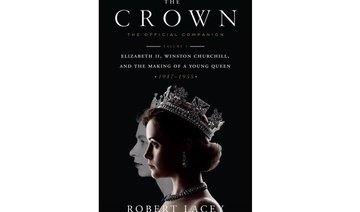Old has become a generally negative term. In our consumerist society, where advertising concentrates on youth and beauty, growing older — especially for women — is the great taboo.
In her new book, “A Glorious Freedom,” Lisa Congdon brings hope back to all women who are both insulted and frustrated by the disparagement of maturity.
Congdon describes herself as a late bloomer. Now an artist and writer by profession, she only began drawing and painting when she was 31. Her first book was not published until she was 44. Getting older has been, in her words, “an enormously gratifying and liberating process.”
“A Glorious Freedom” chronicles the lives of extraordinary women who give old age a new meaning by doing their best work in their later years.
Sensei Keiko Fukuda, for example, endured decades of discrimination before she became the highest-ranked female judo master in the world when she was 98 years old.
Born in Tokyo in 1913, she was the granddaughter of Hachinosuke Fukuda, a samurai and master of ju-jitsu.
After learning flower arrangement and calligraphy, her life changed at 21, when Kano Jigoro, the founder of judo and one of her grandfather’s students, invited her to train with him at his dojo. Despite her size — she was under five feet tall — she excelled. At the age of 40, she became a fifth-dan black belt. For 20 years, despite her achievements, the male-dominated Kodokan Judo Institute refused to give her the sixth dan she deserved.
Finally, after a successful petition, she became the first woman to hold the rank of sixth dan. And in 2011, aged 98, she was awarded the highest rank possible: tenth dan. Keiko continued to teach judo until her death a year later.
Stephanie Young is another inspirational figure who proves it is never too late to live your dreams. After 30 years as a writer and editor for “New York” magazine, at the age of 53 she decided she wanted to pursue a career as a doctor. However, her applications to American medical schools were rejected because she was considered too old. So, she relocated to the island of Dominica, where she was accepted by Ross University.
Young told Congdon: “The difficulty a lot of women have is finding the thing they want to do … There is a lot of yearning. So, if you want to make a change, just be open, and be open to unexpected directions … What worked for me was that intuitive moment when I realized what I have is this amazing opportunity.”
Supermodel Christy Turlington was the face of many brands in the Nineties, including Calvin Klein, Chanel, Marc Jacobs, and Versace.
Two decades on, at the age of 41, she became an activist, setting up Every Mother Counts — a non-profit dedicated to making pregnancy and childbirth safe.
“I had a complicated birth with my first child … I learned that the complication I had experienced and survived was the leading cause of maternal death,” she told Congdon. “I couldn’t ‘unknow’ that information, and I started to actively think about how I could use this experience to help others going into motherhood … And that’s how Every Mother Counts was born.”
Turlington said the remarkable energy she found during the busy decade in which she founded Every Mother Counts, ran marathons, and produced and directed three documentaries, was in part because “I feel so passionate about the work I do. It’s so rewarding daily.”
At 95, Betty Reid Soskin is the oldest national park ranger in the US. She is proud to never have had plastic surgery or Botox. She still works five days a week and believes that she is offering an alternative to a system that puts youth culture on a pedestal.
“Opting out of the workforce at 65 will no longer be practical. Maybe we’re going to start looking at aging differently, and maybe I’m a forerunner,” Soskin said.
Marguerite Duras was born in 1914 in French Indochina, now Vietnam. She studied in France, where she married and had a son. She started writing novels, essays, and screenplays in her late thirties. At 45, she was nominated for an Oscar for her screenplay “Hiroshima, Mon Amour.” At 70, she published her first bestseller, “The Lover,” and won the Prix Goncourt, France’s highest literary honor.
All the women featured in “A Glorious Freedom” show us that age is not a barrier to creativity. Inspiring, and uplifting, the book offers hope and encouragement to women of all ages.
Book Review: Empowering an older generation of women
Book Review: Empowering an older generation of women

Riyadh’s literary havens: Where coffee meets the love of books

- City’s book cafes offer serene spaces for quiet reflection
- Carefully curated selections of Arabic and English titles on offer
RIYADH: Riyadh’s cultural landscape is undergoing a quiet transformation, where the love of coffee meets the timeless allure of literature.
Book cafes are carving out a niche as spaces where readers, thinkers, and coffee enthusiasts converge.
These havens of creativity and reflection offer retreats for the mind and soul, providing a sense of community in an increasingly fast-paced world.

The Book Club: Where stories find their home
Nestled in the Al-Yasmin district, The Book Club is a tranquil retreat for bibliophiles, particularly those passionate about Arabic literature.
Its shelves brim with carefully curated Arabic titles, from classics to contemporary gems, complemented by a modest selection of English books.
HIGHLIGHTS
• In Riyadh’s Al-Narjis district, Wathbah Coffee and Book’s floor-to-ceiling bookshelves, vintage-inspired decor, and intimate corners create a haven for readers and thinkers alike.
• Coffee Trees, tucked away in the Al-Rayan district, offers a sanctuary that blends greenery with literary charm.
The minimalist interior, adorned with soft lighting and intimate reading nooks, creates an atmosphere conducive to focus and relaxation.
What sets The Book Club apart is its browsing policy. Visitors are welcome to skim books for three minutes before deciding to purchase, with additional purchases granting extended reading time.

During Arab News’ visit, the cafe hosted a stimulating talk with Saad Al-Bazai, titled, “Historical Fiction: Why Do They Believe in the Imagined?”
Al-Bazai told Arab News: “These gatherings bring together a diverse audience and provide them with the opportunity to meet researchers.
“This undoubtedly supports cultural life as it creates a platform for dialogue that differs from social media platforms — it is vibrant, direct, and involves personal presence.”
Sophia: A library, a cafe, and a place to connect
Sophia has become a cornerstone of Riyadh’s literary scene, acting as a hub for knowledge, creativity, and meaningful connections.
Its towering wooden shelves are filled with a rich collection of Arabic and English books, carefully curated to cater to a diverse audience.

Beyond being a library, Sophia also serves as a publishing house, amplifying the voices of local and regional authors, bringing their stories to the forefront.
What sets Sophia apart is its dedication to fostering intellectual growth and cultural exchange.
The space regularly hosts book launches, discussion panels, and thought-provoking dialogue sessions that bring together writers, readers, and thinkers from various backgrounds.
The inviting ambiance, complete with warm lighting and cozy seating, creates the perfect backdrop for these events, making each visit an enriching experience.
Aminah Al-Hassani, a loyal visitor, captured the essence of Sophia. She said: “The place is calm and serene, and it has never let me down with a bad book.
“Every book I’ve read here has been better than the last. Their selections are beautiful, and the events they organize are always beneficial and enjoyable.”

Coffee Trees: A green sanctuary
Coffee Trees, tucked away in the Al-Rayan district, offers a sanctuary that blends greenery with literary charm. The cafe’s lush decor, accentuated by vibrant plants and natural elements, transforms the space into a botanical retreat.
Though its library is modest, the curated selection of books is perfectly aligned with the cafe’s serene ambiance.
Patrons often find themselves lost in thought or pages, surrounded by the aroma of ethically sourced, expertly brewed coffee.
Whether it’s the tranquil environment or the commitment to sustainability, Coffee Trees is a favorite escape for those seeking a moment of calm in the city.

Wathbah Coffee & Book: Where timeless charm meets literature
In Al-Narjis district, Wathbah Coffee & Book exudes intellectual allure. Its floor-to-ceiling bookshelves, vintage-inspired decor, and intimate corners create a haven for readers and thinkers alike.
The carefully selected collection spans genres and eras, ensuring there’s something for everyone.
Wathbah’s ambiance is perfect for quiet reading, reflective conversations, or simply soaking in its aesthetic beauty.
As Sara Al-Ebraheem, a loyal patron, said: “There’s a certain magic in time spent in the company of good books, with a perfectly brewed coffee.”

Ons Coffee Roasters: Where simplicity meets serenity
Ons Coffee Roasters offers a minimalist haven for those who crave peace and simplicity. Its clean design, complemented by tasteful art and cozy seating, creates a calm environment perfect for unwinding.
While its library may be small, the books displayed are thoughtfully chosen to inspire reflection and curiosity.
Ons Coffee Roasters is as much about quality as it is about serenity. Its expertly brewed coffee elevates the experience, making it an ideal retreat for anyone seeking a quiet corner in Riyadh.

A cultural renaissance in Riyadh
The emerging popularity of book cafes is providing spaces where literature, art, and community thrive. The cafes cater to a growing audience of residents and visitors who value meaningful connections in an increasingly digital world.
What We Are Reading Today: ‘Mathematical Methods for Geophysics and Space Physics’ by William I. Newman

Graduate students in the natural sciences—including not only geophysics and space physics but also atmospheric and planetary physics, ocean sciences, and astronomy—need a broad-based mathematical toolbox to facilitate their research.
In addition, they need to survey a wider array of mathematical methods that, while outside their particular areas of expertise, are important in related ones.
This authoritative and accessible book covers everything from the elements of vector and tensor analysis to ordinary differential equations, special functions, and chaos and fractals.
What We Are Reading Today: ‘The Owl and the Nightingale’

Author: SIMON ARMITAGE
“The Owl and the Nightingale,” one of the earliest literary works in Middle English, is a lively, anonymous comic poem about two birds who embark on a war of words in a wood, with a nearby poet reporting their argument in rhyming couplets, line by line and blow by blow.
In this engaging and energetic verse translation, Simon Armitage captures the verve and humor of this dramatic tale with all the cut and thrust of the original.
International Prize for Arabic Fiction announces 2025 longlist

DUBAI: The longlist for the 2025 International Prize for Arabic Fiction has been revealed, with 16 novels in the running for the $50,000 award, sponsored by the Abu Dhabi Arabic Language Centre.
While works from Bahrain and Mauritania have made the list for the first time, other nominated novels come from Egypt, Syria, Lebanon, Algeria, Iraq and the UAE.
The longlist has been chosen from a total of 124 submissions by a panel of five judges chaired by Egyptian academic Mona Baker. Joining her on the panel are Moroccan academic and critic Said Bengrad, Emirati critic and academic Maryam Al-Hashimi, Lebanese researcher and academic Bilal Orfali, and Finnish translator Sampsa Peltonen.
In a statement, Baker said, “This year’s longlist is remarkable in its diversity of both theme and literary form. Some novels address women’s struggles to achieve their dreams in a patriarchal society that prevents them from living fulfilled lives. Others offer a nuanced portrait of religious and sectarian worlds, where extremism and dogma contrast with human empathy and understanding.
“There are a number of historical novels on the list which deal with both the recent and more distant past, such as the Abbasid era, or the Inquisition and persecution of Muslims in Andalusia. There are also semi-autobiographical books, and others which read like detective stories.
“Repressive regimes and their power to crush the hopes and lives of ordinary people are also explored; some novelists paint a stark picture of this reality, while others employ sarcasm and humour, rendering these difficult topics more accessible for the reader.”
The 2025 International Prize for Arabic Fiction longlist:
Aqeel Almusawi’s “The Weepers” (Bahrain)
Inam Bioud’s “Houwariya” (Algeria)
Rashid Al-Daif’s “What Zeina Saw and What She Didn’t” (Lebanon)
Ahmed Fal Al-Din’s “Danshmand” (Mauritania)
Jan Dost’s “The French Prisoner” (Syria)
Sausan Jamil Hasan’s “Heiress of the Keys” (Syria)
Iman Humaydan’s “Songs for the Darkness” (Lebanon)
Azher Jirjees “The Valley of the Butterflies” (Iraq)
Hasan Kamal’s “The Stolen Novel” (Egypt)
Taissier Khalaf’s “The Andalusian Messiah” (Syria)
Ahmed Al-Malawany’s “Happy Dreams” (Egypt)
Mohamed Samir Nada’s “The Prayer of Anxiety” (Egypt)
Nadia Najar’s “The Touch of Light” (United Arab Emirates)
Haneen Al-Sayegh’s “The Women’s Charter” (Lebanon)
Sumar Shihada’s “My Life Has Just Begun” (Syria)
Ayman Ragab Taher’s “The Lamplighter” (Egypt)
Review: Palestinian poet Mosab Abu Toha writes against erasure, destruction

JEDDAH: “Every child in Gaza is me,” writes Palestinian poet Mosab Abu Toha in the creed-like opening of “Forest of Noise,” setting the tone for the poems to come and establishing his profound connection to his people and Palestine.
The poems within the slim but impactful volume by the Palestine Book Award-winning poet blend personal narratives with the broader documentation of life under Israeli occupation, siege, and bombardment in Gaza.
Released amidst one of the most turbulent periods in recent Palestinian history, Abu Toha uses the art form to not only capture personal memory, but to document Israel’s atrocities committed against Palestinians and the resilience of the people living in a continuous state of emergency.
Written in clear, simple language that often evokes visceral, painful imagery, his poetry oscillates between moments of loss, destruction, and survival, and glimpses of peace that seem fantastical in their rarity.
In “Palestinian Village,” Abu Toha imagines a peaceful scene “where a canary never tires of singing” that feels like a distant memory or a dream in stark contrast to the harrowing reality on the ground. The poem, like others in the collection, is a reminder of the cultural and natural heritage that Palestinians are fighting to preserve amid what Amnesty International, as well as some regional states, have termed a genocide.
In “On Your Knees” he powerfully uses repetition of the line “on your knees!” to document the humiliating and horrifying experience of being abducted by Israeli forces as he attempted to cross the Rafah border with his family in November 2023.
Abu Toha resists physical subjugation with poetry as a form of resistance and memory — asserting the Palestinian self and narrative and highlighting the power of art to fight back against erasure.
In “After Allen Ginsberg,” the Palestinian poet draws from the American’s iconic work “Howl,” writing:
“I saw the best brains of my generation
protruding from their slashed heads.”
By adopting Ginsberg's confrontational style, Abu Toha’s unrestrained voice laments and protests Israel's ongoing assault that has claimed the lives of thousands of children, women, and men.
The poet’s unwavering voice in “Forest of Noise” challenges readers to see Gaza not as a distant conflict but as a human tragedy that demands attention.

















